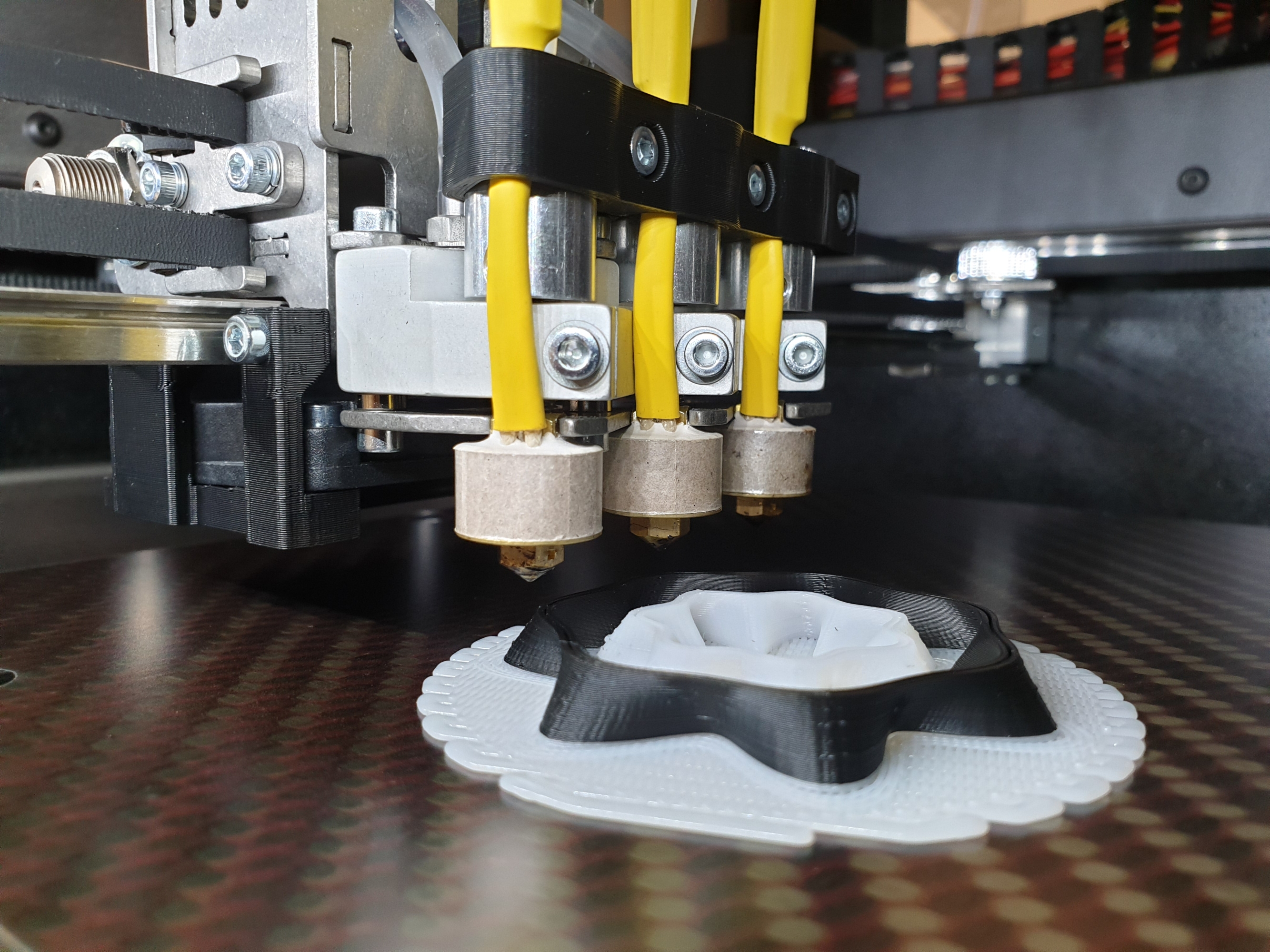Improved 3D printing thanks to partially crystalline polymers
3D printing technology is entering more and more ranges of application and industries. Partially crystalline polymers are a crucial material type for additive manufacturing. However, manufacturing demanding plastic parts made with these materials must overcome many limitations. A research alliance linking the Fraunhofer Institute for Microstructure of Materials and Systems (IMWS), the Martin-Luther-Universität Halle-Wittenberg (MLU) and the Otto-von-Guericke-Universität Magdeburg (OVGU) intends to open up new ranges of application for plastic parts made by additive manufacturing. The joint project is sponsored both by the Free State of Saxony-Anhalt and through the European social fund for regional development (EFRE).


Polymers consist of long-molecule chains that are normally unordered. In some thermoplastics, when the soft molten plastics solidify, the molecule chains may become partially ordered. This crystallization depends on the cooling conditions, additives, and fillers in the polymer, as well as the flow conditions during solidification. The crystallization result significantly affects the polymer’s mechanical properties. Consequently, the processing parameters are the key to a better part quality in 3D printing.
Many of the plastics commonly used in industry may be partially crystalline, such as polyethylene (PE) or polypropylene (PP). They are among the most important materials worldwide, used for tubes or packaging. However, these partially crystalline polymers are rarely used in the current push toward additive manufacturing technologies, such as 3D printing. The range of usable plastics is limited, and the part characteristics frequently need improvement.
»Many additive manufacturing techniques work with filament-based methods. These filaments can be visualized as thin plastic threads that are deposited layer by layer and cure afterwards. Using partially crystalline polymers as the initial material frequently leads to technical problems, such as distortion or heterogeneous mechanical properties across the part that can result in part failure. This issue (bottleneck) makes (hinders, counteracts) the use of additively manufactured plastic parts impossible in many applications«, says Prof. Mario Beiner, project manager at the Institute for Chemistry of the MLU and scientific Head of the Polymer Applications Business Unit at the Fraunhofer IMWS.
The project partners seek to bridge this gap and find new ways to use additive manufacturing to create high-quality parts from partially crystalline polymers. To reach this goal, the researchers are bringing together the region‘s various kinds of expertise: the MLU researchers have excellent knowledge of partially crystalline polymers, the Fraunhofer IMWS contributes their application-oriented knowledge of additive manufacturing, and the OvGU’s Faculty of Mechanical Engineering lends the project its experience in simulating mechanical part properties.
The studies are also closely connected with the Collaborative Research Center »Polymers under forced conditions«, which has been funded by the German Research Foundation ( DFG) since 2011, the interdisciplinary Center for Transfer-oriented Research in (of) Natural Sciences (German abbrev.: IWE TFN), and the integrated international Graduate School »AgriPoly« on functional polymers at the MLU; the Plastics Competence Center Halle-Merseburg; the DFG-sponsored graduate college »Micro-Macro-Interactions of structured Media and Particle Systems« at the OVGU; and the Chemical and Bisosystems Engineering Center, which also ensure the inclusion of small and medium-sized enterprises in Saxony-Anhalt.
This accumulated research expertise is necessary to meet the scientific challenge. »There are a lot of open issues, ranging from material and parameter selection via customizing additive manufacturing technologies up to component testing. However, this challenge also offers a great potential: Innovative solutions may result in unique selling points and sustainable advantages in competition«, Beiner explains.
The approach the project partners will employ is aimed at determining and controlling crystallization processes during additive manufacturing, as well as exploring suitable simulation algorithms to represent the resultant part properties. In addition to the crystallization kinetics of the used polymers used, additive manufacturing parameters, such as temperature, cooling, and shear rate, will be analyzed, and adequate in-line measurement methods will be developed for this purpose. The researchers will also develop the simulation algorithms to represent relevant additive manufacturing aspects that are tailored to specific use cases and are compared with the values measured in experiments to manufacture plastic parts.
The project will be completed on 31 March 2022 and provide knowledge of how to record and modify the 3D printing parameters in line, modify the manufacturing technologies, and support the processes by simulation, which – in sum – should make it possible to additively manufacture plastic parts using partially crystalline polymers that are of clearly higher quality, can withstand great mechanical stresses, and have high geometric fidelity. Finally, this way, plastic parts made of partially crystalline polymers by means of 3D printing could find uses in many additional ranges of application.